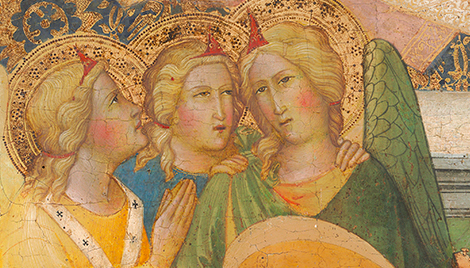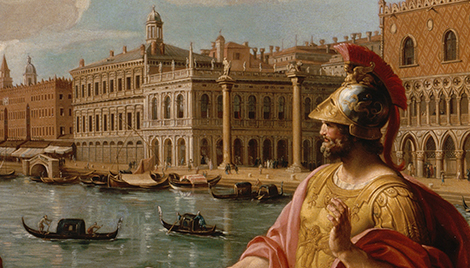Historical Reconstructions of Kress Paintings
Few people – and indeed few art historians – have a clear grasp of the materials and techniques of Old Masters, or, more generally, of the physical make-up of works of art. This is the domain of what is often called “technical art history,” which occupies a middle ground between the history of art and art conservation. Kress is increasingly engaged with technical art history and with building bridges between the expertise of the art historian and that of the conservator and conservation scientist.
In 2009, the Winterthur, University of Delaware Program in Art Conservation intended to erect just such a bridge, using the Kress Collection as building material. Graduate students in this joint MA program were invited to participate in the creation of a series of accurate reconstructions of three paintings from the Kress Collection, all from the National Gallery of Art, Washington D.C. These resulting reconstructions are intended to address and engage a wide variety of audiences, from children to adults, and specifically to enhance the understanding of art historians and other scholars and teachers regarding the working processes, materials, and techniques of the Old Masters.
Brian Baade, a 2006 graduate of the Winterthur, University of Delaware Program in Art Conservation, prepared each reconstruction. Graduate and undergraduate students assisted with art historical research, assembly of relevant bibliographic and technical documentation, and all stages of preparation. Each reconstruction was created with nine to sixteen exposed cutaway sections revealing the preparatory layers and painting stratigraphy, textures, transparencies, and brush strokes.
The resulting didactic materials are now on deposit with the museum education department at the National Gallery of Art, where they are being used by museum educators to promote the appreciation, interpretation, and preservation of European art from the 14th to the 16th centuries. The paintings selected for this project represent three distinct working methods originating in different eras, including the Early Italian Master, Giotto di Bondone, the Netherlandish painter, Hans Memling, and the great Greek artist working in Spain and using Venetian Renaissance methods, El Greco.
To learn more and see images from the reconstructions, please view the Kress Reconstruction Report, Fall 2010.



